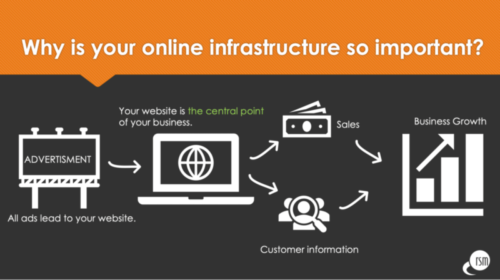Email marketing: how often is too often?
I once ordered a pair of pants from Brand X. They are a fine pair of pants and I look fabulous wearing them. I once ordered a shirt from Brand Y. It is a fine shirt and, of course, I look fabulous wearing it. I once ordered a refrigerator from Brand Z. It is a fine refrigerator and it keeps my three-week-old Chinese takeout fabulously cold. But now . . . on a daily basis I receive emails from X, Y and Z trying to sell me a plethora of stuff I don’t need. I have grown fabulously weary of all three marketers.
At first, I actually opened their email messages just to see what they had in store for me. Now I automatically hit the delete button. Like the little boy who cried wolf, their voices have become so pervasive as to become ignored. I simply no longer pay attention to anything they have to say. That’s too bad because of the hundreds of emails I receive from them, there may be one or two that actually offer something that would bring real value to my life. I’ll never know.
So, marketers, how often should you send emails? We all realize the potential revenue boost that email marketing can have on your business. If you send one, you get X amount of dollars. But if you send two do you X times two? What about three? Where is the point of diminishing returns?Here are some things to consider when determining how often to email:
Are you adding value?
After I received my pants from Brand X, a well-timed email offering a discount on a new belt to hold up those fabulous new pants could have added value to my experience and to my budding relationship with X. Instead, I was bombarded with emails pushing long-tail t-shirts, moc-toe work boots, and the ever popular buck naked boxers. So like the crazy girlfriend in college who pretended to know me but didn’t really care to, the relationship stalled. Don’t be the crazy girlfriend. If you represent that you know your customers, demonstrate that. Ask yourself, “What problem am I solving for them?” If you can’t answer that question because you don’t really understand your customers’ problems, hold the email until you’re confident of the answer.
It’s all about context.
When I purchased a refrigerator from Brand Z, that established the initial context of my relationship with them. A refrigerator is a home appliance, which should have put me in the contextual customer box of “home owner.” And if my refrigerator needed replacing could I possibly have a problem with dishwasher too? Aha! Perhaps an email offering a once-in-a-lifetime deal on a dishwasher or other appliance would have resonated. Instead, I get an offer for a generator. Now, one could argue that if the power went out I would have a problem running my new refrigerator, but that’s a little out of context, don’t you think?
Test and ask!
Everyone has a different idea about what constitutes too many or too few emails, so here’s an idea: ask your customers! It should part of the broader project of testing your email campaigns, an ongoing process of becoming a smarter and more effective e-marketer. If Brand Y had asked me, “are you receiving too few or too many emails?” I would have honestly responded. And if they then followed up by decreasing the frequency of their email blasts, that would have gotten my attention. I might have even started opening those fewer emails to see if there was actually something of value for me there.
What does your audience expect?
Every morning I receive an email from “The Universe,” urging me to remember how awesome I am and to be grateful for my awesomeness. Sometimes these inspirational, slightly cheesy messages resonate with me, sometimes they don’t. But either way, I expect those emails. And even though I know the Universe will also use our moment together to pitch books, tapes and t-shirts, I’m okay with that because my expectations were firmly established on the front-end. So, email marketers, what expectations have you established with your audience? And are you meeting those expectations?
Does your content match your frequency?
In the above example, “The Universe” has a fresh, new message for me every weekday. It has something to say to me every morning that I haven’t heard before, so the once-a-day frequency matches the once-a-day content. People don’t like reading the same thing twice. There will be times when you want to remind readers of certain details, but as a general rule, avoid sending emails that have the same basic message.
Whatever frequency you decide on, be sure you have the fresh content to make each email worthy of interrupting your customer’s day. Keep in mind that your email is an uninvited guest in your prospect’s lives. That means striking a fine balance between demonstrating knowledge of their needs and offending them with an overly intrusive approach. Ensuring that your emails are timely, relevant and offer real value will increase your ROI and keep your customers happy.





